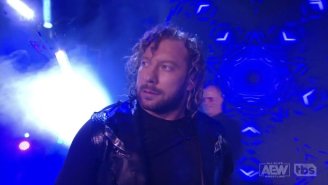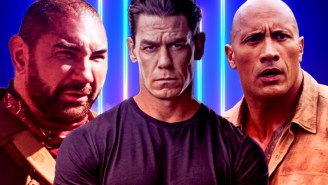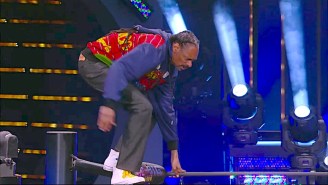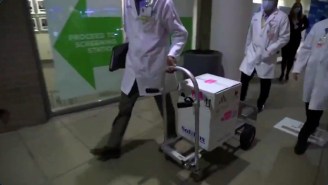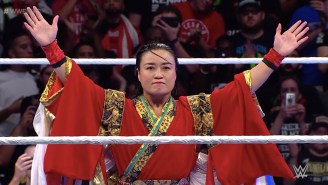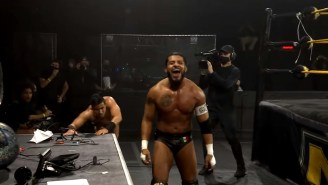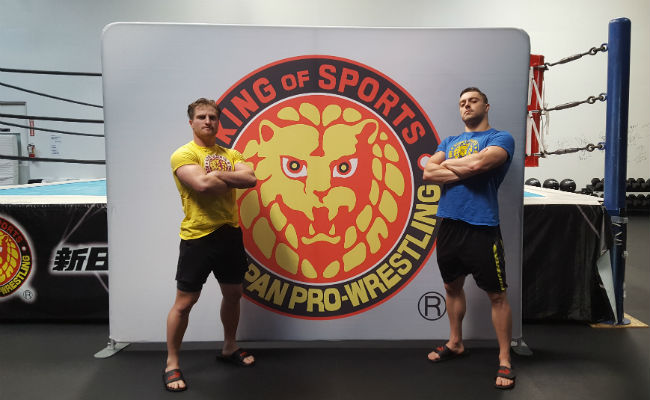
The opening of New Japan Pro Wrestling‘s LA Dojo in Carson, California, earlier this year was a significant moment in the company’s expansion outside of Japan. Since their initial five-day training camp and grand opening event this spring, the dojo, led by head coach Katsuyori Shibata, has held more camps, hosted and set up for New Japan events, been the subject of the California Dreamin’ documentary series (available to watch on NJPW’s YouTube channel and as free content on their streaming service), and opened its own dojo house for full-time trainees.
The first training camp at the LA Dojo had thirty students. At the time of writing, only three, Alex Coughlin, Clark Connors, and Karl Fredericks, make up the current class of official NJPW LA Dojo Young Lions. They live in the dojo house with Shibata and train with him almost daily. Connors and Coughlin made their debuts for the promotion in a dark match at Fighting Spirit Unleashed in Long Beach on September, while Fredericks debuted on November 10 at Lion’s Break Project 1 at CharaExpo USA in Anaheim, a convention held by Bushiroad, New Japan’s parent company.
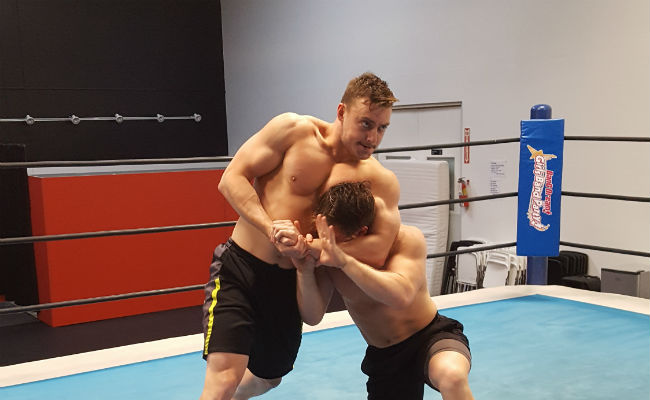
I spoke to Coughlin and Connors in the office of the LA Dojo about their experiences as Young Lions so far. Both had prior wrestling experience (Coughlin had trained “about a year combined” at NYWC in Long Island, New York, and Connors did a three-month course with Lance Storm followed by working the Northwest indie circuit and training at the Buddy Wayne Academy in Everett, Washington), but nothing as intense as training with Shibata at the New Japan dojo. Coughlin, a longtime NJPW fan, had jumped at the chance to sign up for the first training camp in the States, while Connors heard about the opportunity from friends and signed up at “literally the last second.” They tell me Fredericks was a last minute sign-up as well.
When asked what’s unique about training with Shibata, Coughlin replies, “Everything from the ground up. How we do our rolls to the very, very basics, everything… Just the Japanese style in general is very, very hard-hitting. Like, wrestling in general is very tough, physically it’s intense, but even more so, wow, it’s hard to put into words… It’s like getting beat up a lot, but in a good way, you know?”
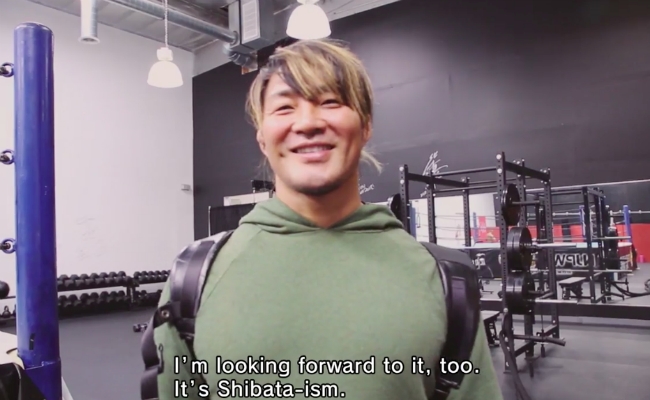
I bring up the moment in an episode of California Dreamin‘ in which a visiting Hiroshi Tanahashi light-heartedly refers to Shibata’s training style as “Shibataism.” I ask Connors and Coughlin, if Shibataism is a real thing, what would it be? Connors exhales loudly, then jokingly says that sound is what it would be.
His real answer is, “Do everything one hundred percent at all times. Everything we do is balls to the wall, you know, I mean there’s not a single thing that man does and he’s not turned on, you know what I mean? Like mentally there. That’s my Shibata-ism, is just like if you’re trying to hang with Shibata-san, inside, outside the ring, at the house, one hundred percent you’re on… which is something that’s rubbed off on all of us, I think.”
To Coughlin, Shibataism is more about being extremely detail-oriented. “If you go in there thinking you know already – like there were a lot of people who came to these camps who were like ten, twelve, fifteen years experienced already in the business… and Shibata-san tries to be like,”Go like this, do something more like this,” and they go, “Well, actually, I do it because-” Whoa! Oh no! Pump the breaks, kid.
“He wants people who are open to criticism, willing to learn, willing to change. He wants the adaptability and the willingness to do so, and seeing if you can learn and keep it. He can see if you actually absorb it and remember it for next time. There are plenty of times I do stuff how I was taught, how I thought it was supposed to be done, and then I’ve been corrected, and of course basically everything I’ve ever done has been corrected at this point… And he’ll take his time too. Like, we’ll go over headlocks for as long as we wants, we’ll go over lockups, we’ll go over rope-running, everything. ”
Connors chimes in that, “We’ll do it until it’s perfect. Perfection…. It makes you really realize why he’s as good as he is too.”
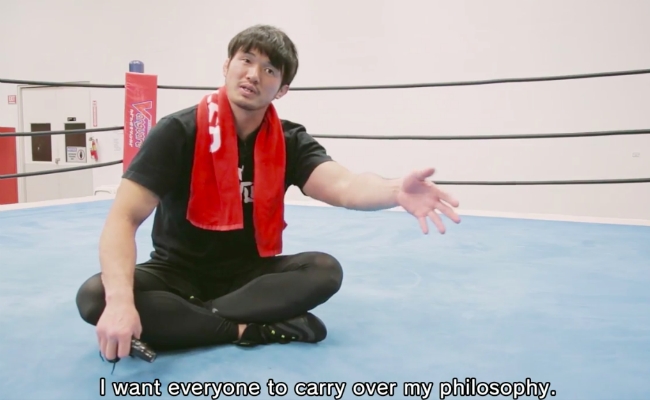
Coughlin remembers Shibata taking questions at the end of the first training camps he attended, “and some people were like, ‘Oh, who should we watch if we want to get better at technical wrestling? Who should we watch to get better at striking? What are some matches that we should watch if just want to learn the style and get better?’ and every time the answer is, ‘Me.’ Every time. It’s so good… If you don’t believe it, then what’s the point? He’s absolutely right.”
Connors says he had only seen a few Shibata matches before attending his first camp, “and all I knew about Shibata-san was, like, he’s the baddest dude in the world” calls him “the best coach I could ask for.” Like Coughlin, he said, “he’s re-taught us everything. I’ve only been here for six months through the camps and whatnot and I feel like a totally different wrestler and it’s because, like Alex was saying, the Japanese style is so different. Everything’s about precision. It’s about doing it correctly every time, always having more than anything a fighting spirit too.
“People take it for granted, like, when you’re out there wrestling, like I remember when I was on the indies, guys would go out there and they would be backstage just like “I’m getting ready for my match” and they’d go out there and have their match, go through the motions, you can’t do that Japanese style… In this dojo, you turn it on, you’re always on, and that’s, I think, something I like about it personally with Shibata-san.”
In a separate interview with With Spandex, California wrestler Bateman (fka Tyler Bateman), a wrestler known for work at promotions including PWG and Bar Wrestling, compared the LA Dojo camp he attended to his WWE Performance Center tryout earlier this year. Bateman, who wrestled David Finlay and Juice Robinson in a tag team match with Brody King at the dojo’s grand opening, says of the two training facilities, “They’re very similar and very different at the same time. Both very physically trying.”
He continues, “Under Shibata and Rocky and Scorpio Sky… it was really interesting to learn the very small differences that they wanted things done, they expected things done, in some of the drills that they had us do,” while at the Performance Center, “everything there was sort of go, go, go, go, water, this is how we want it done, a different coach in each ring, you do drill in one ring, you then drop down and jog to the next ring… And you hold each other up and carry each other through, so you support everyone else that’s going and they support you in what you’re going through.”
Bateman’s Performance Center class also included promo and character work, a feature absent from the dojo camp. “We had a minute the very first day… Everyone had one minute, tell us who you are, if you have a character or a gimmick and you want to sprinkle some of that in, then go for it, and so we did. And then during the drills they wanted to see personality and whatnot just during the drills… The last part, you had a match, so that was your chance to be you and show what you could do. New Japan I felt was more focused on teaching the proper technique with what they were teaching, and the last day they did have us change out and have matches as well, I’m assuming looking for like heart and passion and spirit and execution and whatnot.”
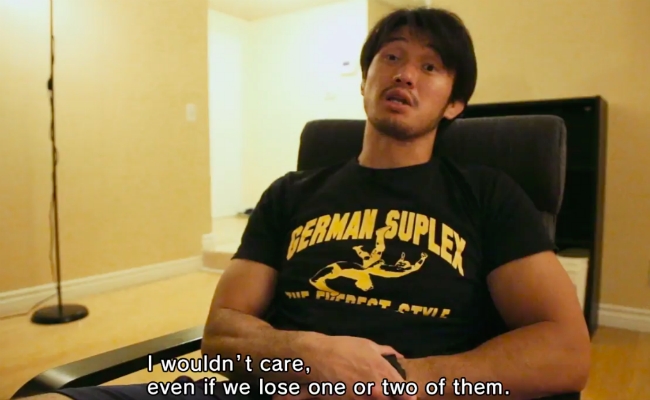
Coughlin and Connors couldn’t tell me the specifics of how they went from camp attendees to official Young Lions, because, in Connors’ words, “That might be a secret of New Japan,” but they could give me an outline of the story. When attending his first dojo camp in March of this year, Connors could tell Shibata had taken an interest in him by the second day. As the camps continued, fewer and fewer wrestlers kept being asked back for more. Coughlin, Connors, Fredericks, and Buddy Garcia, who has since left the dojo, then moved into the house at the end of July.
When asked if they thought this was a possibility when signing up for that first training session, Coughlin compares it to a childhood daydream he used to have while playing drums, “like oh, Metallica’s tour bus broke down by my house. Oh, Lars’ arms are broken, and he can’t play the show and they overhear, ‘Oh, this kid’s pretty good, let’s see if he wants to play the show with us. Yeah, you did a good job, do you want to be part of the band?’ Little things like that. And I felt like that with this camp… It’s just the craziest thing that actually kind of came true, in a way.”
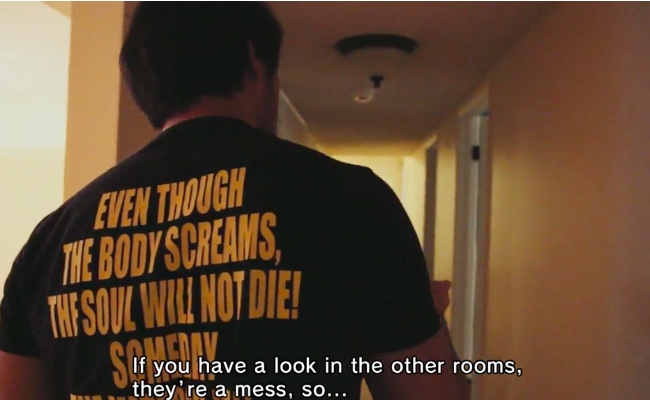
Hikuleo, an American wrestler who trained at the dojo in Japan, debuted on the main New Japan roster as part of the Bullet Club (but still thinks he’s a Young Lion because “I’m still doing squats every day” and paying his dues), has been staying at the LA dojo house and training in the dojo while recovering from an injury. As the first wrestler to train in both New Japan dojos so far, he has a unique perspective when comparing the training and living experiences of both facilities, which he spoke about to With Spandex.
Like the students in the NJPW dojo in Japan, the LA dojo Young Lions cook chanko, the traditional bulk-up dish of sumo wrestlers, and have a curfew. Other than that, Hikuleo says the houses are very different. “In Japan constantly there’s a whole bunch of senpais coming in and we’d held take care of the washing and everything. Here it’s just Shibata-san and then it’s more Americanized because we’ll practice and everything, come back, make our chanko, we eat together, and then right after chanko we’ll do a film session because he’ll film the practices. And then he’ll just give us more advice, which is amazing.”
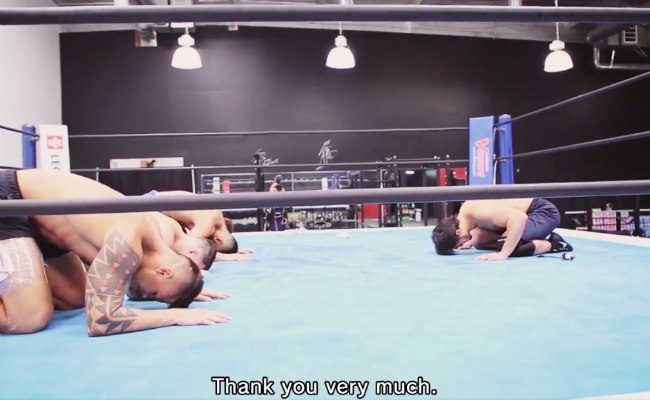
Hikuleo says training in the dojos is more similar, but still has its differences due to fewer teachers coming in and out, plus Shibata’s training methods. While the Japan dojo training is more “traditional style,” Shibata is “updating the training system… Like one day we’ll do our squats, we’ll do like a thousand squats, we’ll do a whole bunch of pushups, but then the next day we’ll do like a circuit… We’ll start with, it’s like a Crossfit workout, basically, and we’ll do like two rounds. And it takes like fifteen-twenty minutes to do, and by the end of it we’re just all completely gasping for air, just blowing up, but it’s great because it’s just updated, basically.”
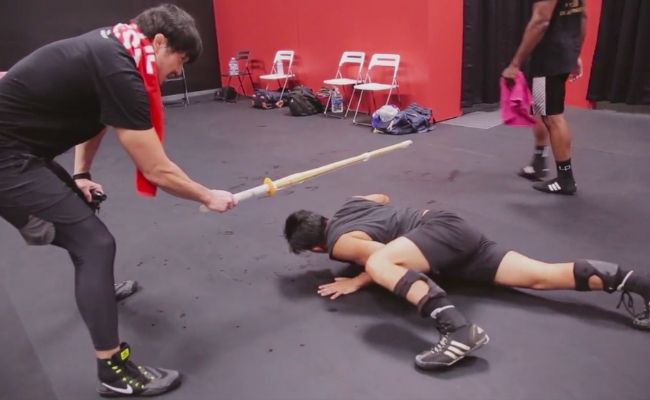
He thinks the different workouts make more sense for the LA dojo class, made up of people with some prior wrestling experience, while the Japan dojo’s more repetitive conditioning (group stretches, then an infamous amount of squats), make sense there “because a lot of the Young Boys over there are like real young boys. Like they’re coming out of high school, coming out of college right away, so it’s good discipline.”
Clark Connors and Alex Coughlin made their own debuts at Fighting Spirit Unleashed (Connors: “I kicked his ass.” Coughlin: “It was referee stoppage. I never gave up.”) after a month of all four of the Young Lions training for the dark match, then finding out who would wrestle in it a few hours beforehand. Coughlin says of the experience, “I’d had maybe ten or so matches before this whole New Japan thing… from here to there is unbelievable. I don’t think there’s a word that properly describes it. It was a great day.”
The Young Lions will have their next matches at Championship Wrestling From Hollywood on December 9 at the Oceanview Pavilion in Port Hueneme, California. On the same show on which Nick Aldis will defend his NWA World Title and Willie Mack his NWA National Title, Fredericks will wrestle Bateman (accompanied by his manager Sara Wolfe, also a dojo camp attendee), and Connors and Coughlin will team up against Ray Rosas and Adrian Quest.
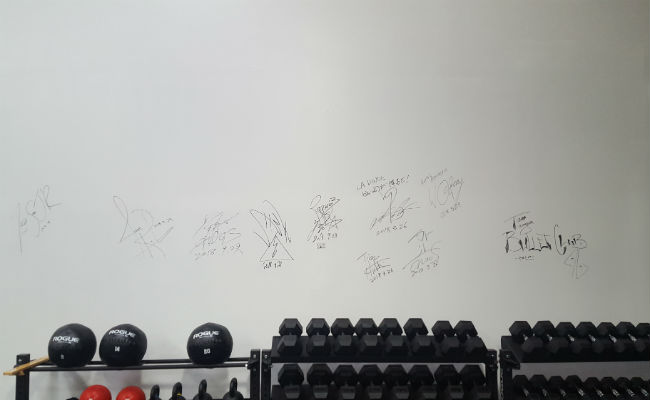
When they move up to the main New Japan roster, Connors’ dream opponent (with Shibata off the table), is Tanahashi. “Just him being who he’s been over the past many years… He’s a fan favorite, he’s kind of the embodiment of New Japan, and I always thought that would be a cool role to have, and that’s a mantle that I would love to take up someday, so I’d say Tanahashi-san.” Coughlin’s dream singles match with a “guy that I’m just so high on, that I respect so much” would be against Kushida. They tell me Fredericks would choose Michael Elgin.
Like their dream opponents, the LA Dojo Young Lions have different backgrounds in life and wrestling, and to Shibata, that’s not an issue. In promotional material for the school, Shibata has said he’s looking for “samurai” and that “Nothing else matters, not race or looks. What matters is spirit.” Connors and Coughlin echo that sentiment. According to Connors, the main way the classes have been narrowed down was “everyone who gave it their all every time and fit the New Japan mold.” Coughlin adds, “It’s not even the last man standing. It’s never giving up. Even if you can’t do it, keep going. Make sure that you try. Make sure that you want it. And that’s all. We look for fighting spirit.”
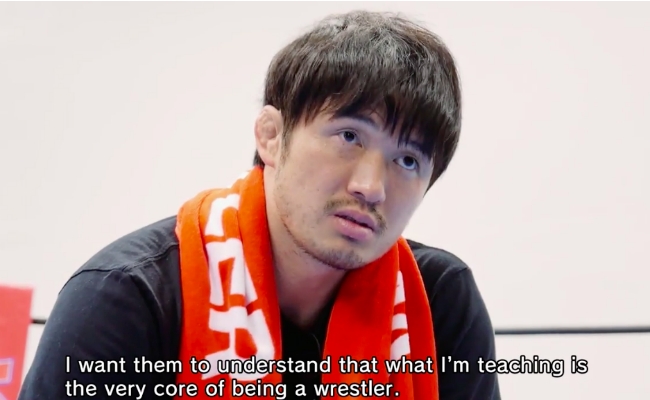
That phrase “fighting spirit” comes up a lot in Japanese wrestling, so I ask the young New Japan wrestlers to define it. Coughlin says, “It’s that intangible. It’s the It Factor… When you can still run on E, keep fighting, you’re never down, you’re never out, you never quit, that’s what they’re looking for. They’re not looking for the biggest, they’re not looking for the baddest, they’re not looking for the strongest. They’re looking for the people with the best heart, the best spirit, that keep on going.”
The second part of his answer is reminiscent of the slogan of Karl Gotch, the God of Wrestling whose widespread influence included helping shape NJPW, “Never lie, never cheat, never quit.” As much as Shibata’s training has been updated, it makes it sound like he’s been successful in passing on New Japan traditions to his students so far as well.
Connors gives a less tangible, more cryptic answer, about the intangible concept: “If someone reading this doesn’t know what fighting spirit is within their heart, they might not have it.”

